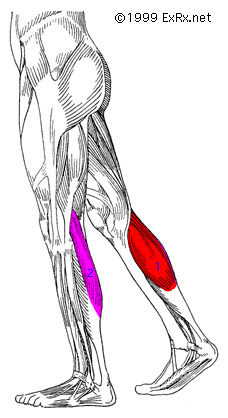

Wild Utah
phone
435-615-9609
fax
435-615-2196
email us free@wildutah.net
In the Light of Surefoot Orthotics
by tommy kirchhoff
Wild Utah has been touting the wonders of Surefoot Orthotics for three years. We’ve said once you buy a pair you’ll immediately notice a gigantic leap forward in the power and control with which you ski or ride. This is no illusion or power of suggestion. You’re just more balanced over your boards. The strength in your body seems to manifest itself in your turns. All the while, your feet are incredibly warm and comfortable.
From Bob and Russ Shay, the inventors of Surefoot, comes a secret. Their secret is that the combination of the 38 muscles, 52 bones, 66 joints, 224 ligaments and network of tendons, nerves, and blood vessels in your feet all work together to balance, support and propel you. The better your feet perform, the better you perform.
Back in college, my buddy Jon Stewart told me my right knee was degenerating a little (he gave the caveat that everyone degenerates). It freaked the hell out of me, but now I’m in a different place.
I took Kinesiology my senior year. Since then, I had been thinking about the size and strength difference between my right and left calf. I’d been trying to work out a change in my walk with my hips, knee position and my feet to correct it. Then I started skiing on Surefoot orthotics. I liked them so much, I started wearing them in my shoes. In the last two years, I had been getting closer to having a step with my right foot which matches the feel of my left.
This summer, I believe I reached a level of physical enlightenment. I saw a woman walking at Deer Valley who had enormous medial gastrocnemious (inside upper calves), but normal-sized lateral gastrocnemious (outside upper calves). I noticed her feet were pointing out laterally to an extreme when she walked (duck footed).
That was it! My lateral gastro was normal, but my right side medial gastro was inferior in strength and appearance. I started walking with my right toe pointed out more than “ordinary.” I found that too much gave me discomfort, and too little put my foot in basically the same position it had always been in. My back seemed to get straighter; it hurt less at the end of the day. My steps became more rhythmic; I felt more balanced. My hip, which has always been sort of locked up, has begun to swivel. It has really been incredible.
This gets me thinking, ‘am I making something worse?’ I explained it to my
old buddy Jon, and posed this question to him. This was his response:
“Ahhh, balance, Isn’t it great to feel. Unfortunately you have to appreciate
imbalance to define balance. A lot of knee imbalance comes from the Tensor
Fascia Lata muscle. It is the muscle above the I. T. band. (Lat. knee stabilizer)
People who use their leg in a hip flexed position will “train” this muscle
into a passively contracted state. When they stand up straight, this new muscle
memory will be in a contracted state under tension. (trigger point can be
felt about 2 inches below and 1 inch lateral of the A. S. I. S. “hip bone
above your front pocket,” sometimes it is closer to the greater Trochanter
(femur); more pressure required to find it when hip is flexed, best if lying
down and somebody uses their elbow to find it).
When the Tensor Fascia Lata is “out,” the Psoas (muscles responsible for rotating the hip and flexing the spine) will most likely be out too.
“As above, so below” can also be interpreted as “as in front, so behind.” When Psoas is out, so will be Piriformis, the major lateral hip rotator (duck foot). Using this gait pattern might be a reason for the “big interior Gastrocnemius” either being used to facilitate the gait or to try to pull the toe back “in” for a normal gait. “Pulling” yourself out of a contracted pattern, against resistance, addresses the problem from both directions. It neurologically activates the “weak” side and inactivates the “overly strong” side.
2 great books: “Rolfing” ISBN 0-89281-335-0 and “Myofascial Pain and Dysfunction” ISBN 0683-08365-1.
If you’re merely trying to match your right foot’s gait to that of your left, and it does feel like your hip is more flexible and you’re more balanced, I’d say you did find a level of physical enlightenment for yourself.”
My whole body is feeling better and better. I think all the pieces were there, but it took my Surefoot orthotics to put my feet in the right place so I could pull it all together. Thanks Surefoot.
